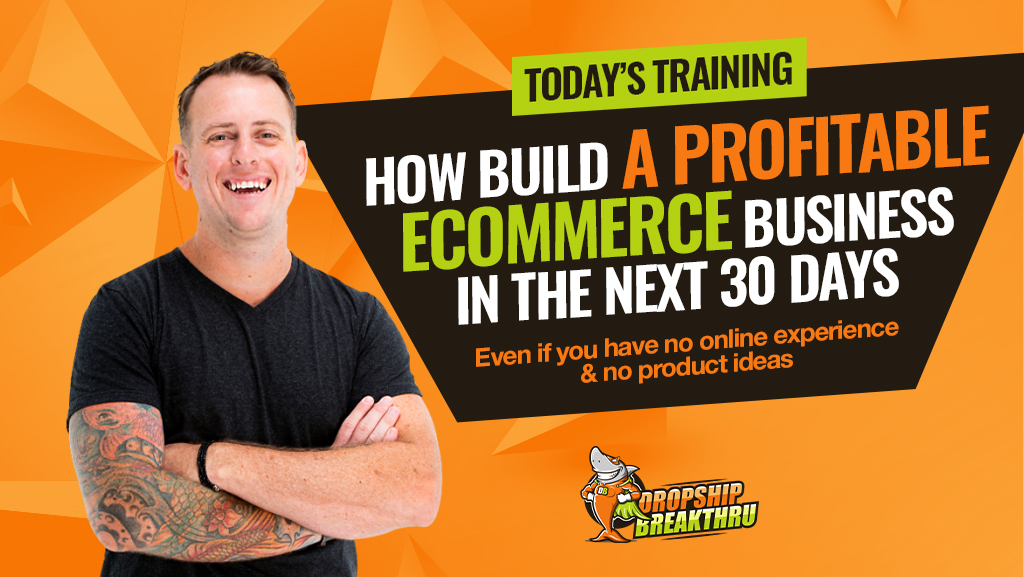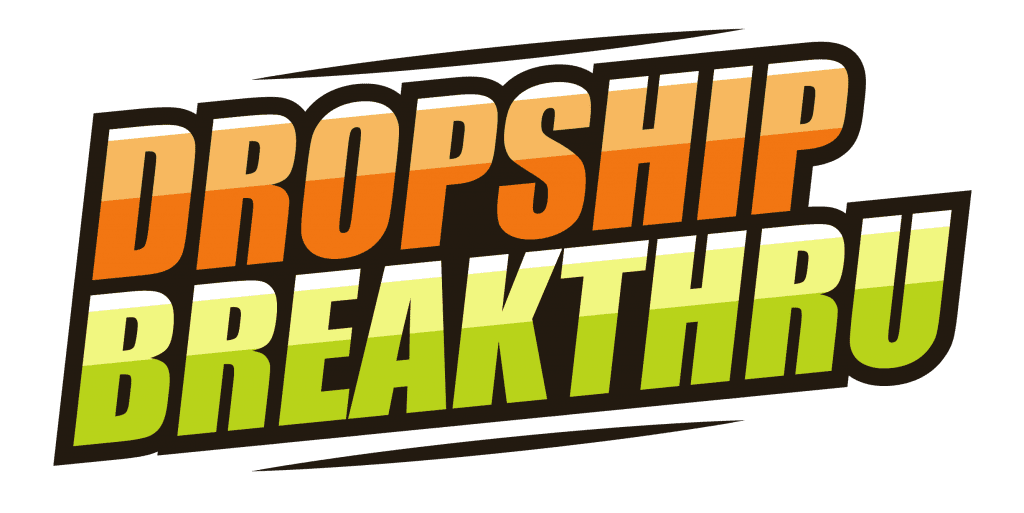How to Dropship on Shopify (The Right Way)

High ticket dropshipping on Shopify: Doing it right can lead to profit, while missteps can cost you.
And we’re about to break it down, step by step.
We’ll start by explaining what Shopify is and how dropshippers use it.
Understanding costs? Covered.
Picking products that sell? We’ve got pointers.
Setting yourself up for long-term Shopify success? We’ve mapped it out.
Then we’ll wrap things up by giving you the inside scoop on the benefits and disadvantages of Shopify for dropshipping.
Let’s get started.
What Is Shopify and How Does it Work for Dropshipping?
Shopify is one of the leading Ecommerce platforms, and it’s designed to make online selling straightforward. The platform handles everything from product listings to payments and beyond.
But how does dropshipping work on Shopify?
Think of Shopify as your digital storefront for high ticket dropshipping. With Shopify dropshipping, you sell products without needing to keep them in stock. When someone places an order from your Shopify store, you purchase the product from a third-party supplier, who then ships it directly to the buyer.
If you’re considering selling high ticket products, we highly recommend using Shopify to set up your site.
The platform offers secure payment gateways and trust badges that reassure customers when making high ticket purchases. Plus, with the right strategy and tools, Shopify can facilitate smooth operations and customer service.
The Cost of Getting Set Up on Shopify
You might be wondering what your dropshipping startup costs will be…
Launching any business comes with costs (although getting started with high ticket dropshipping is surprisingly affordable!).
You can spend thousands on a custom site, but you really don’t have to! And there are cheaper platforms – but Shopify is built for Ecommerce and makes the entire process much easier. Plus, you’ll avoid having to move your site to a different platform when you run into problems down the road.
When figuring out how to set up dropshipping on Shopify, you need to be aware of your initial and ongoing expenses.
Let’s break it down.
Shopify Startup Costs
- Domain name: You’ll need a domain name for your online store. We like Namecheap for domain registration, which will be around $14 a year.
- Shopify subscription: Shopify offers several plans. The basic package is $39 a month – which is just fine for beginning dropshippers. Grab a free trial here!
- Premium theme: We recommend the Superstore Theme from Out of the Sandbox, which is $320. We’ll give you Superstore for free when you sign up for our high ticket dropshipping course.
- Dropshipping apps: While Shopify provides native integrations, you might want some specific dropshipping apps. We’ll talk more about our app recommendations in a minute. Prices vary, but expect to pay anywhere from $10 to $300 each, depending on the app.
- Initial marketing: Budget at least $30 a day on Google shopping ads only when starting – to kickstart your store.
Ongoing Maintenance Costs for Shopify
- Shopify’s monthly fee: Don’t forget to budget for your Shopify plan’s recurring fee.
- App subscriptions: You’ll need to pay monthly or annual fees for some dropshipping apps.
- Transaction fees: 99% of businesses use Shopify payments exclusively. Fees for transactions made via third-party payment providers range from 2.9% or less.
- Advertising and marketing: Regular promotions or PPC campaigns might be part of your ongoing expenses. Depending on your dropshipping marketing strategy, you should keep it to $30 a day to start.
While these are typical costs, actual expenses can vary based on individual choices and strategies. Do your research, budget wisely, and remember: Invest well in the beginning, and don’t overspend on tools and fancy stuff before you know what you really need for your store.
Finding the Best Products to Sell on Shopify
Finding a lucrative high ticket dropshipping niche can make or break your Shopify business.
Don’t rush this step.
The first thing to keep in mind is that choosing dropshipping products for your store isn’t just about selecting items – you need to understand and cater to your customers. Before you even think about picking a niche, think about serving a potential audience.
How can you meet the recurring needs of a specific group of people? Your ultimate aim should be cultivating a base of repeat buyers. Tap into existing interest and demand for products, and look for opportunities to serve an active, passionate group of potential buyers.
Wanna know exactly how to do this? DropshipBreakthru.com/5 is our 5-day challenge. In 5 days, you’ll know exactly who you’re going to serve, what you’re going to sell, and identify the suppliers and brands within your industry.
The Dropship Breakthru team will even review your work, help you choose the right industry, and show you clear next steps to building and growing your own high ticket dropshipping business.
Focus on finding products to sell on Shopify that cost $800 and up. High ticket items like these will give you better profit margins and fewer return requests. Learn more about the benefits of high ticket vs. low ticket dropshipping here.
Finding Suppliers
You’ll need a wide variety of dropshipping suppliers. In the U.S., ideally, you’ll want at least 15 suppliers, but aim for a minimum of five. Diversity in suppliers gives your business more flexibility and resilience.
When you’re looking for a good Shopify dropshipping niche, research your potential competition. You’re looking for some competition – because then you know there’s a market for those products – but you don’t want to enter an already-overcrowded niche. Opt for niches that have no more than 15 competitors.
Look for products that people are actively looking for in the search engines. Use tools like Ubersuggest to research the number of monthly searches for a particular product. You’ll want to choose products that attract 20,000-40,000 searches per month.
If you have multiple niche options that fit all these qualifications, start with one and add others later.
The 4-Step Process for Starting Your Dropshipping Business on Shopify
There are a number of platforms that offer pre-built dropshipping stores with preloaded products. We recommend avoiding them.
While a done-for-you solution might seem like a great way to get up and running fast, you end up offering low ticket, low-quality products on a generic website, and it’s tough (almost impossible) to build a reputable, long-term business using that model.
Instead, do high ticket dropshipping and build your own store using Shopify. This gives you control over every aspect of your dropshipping store, so you can stand out from the crowd and build a lasting business.
Here’s a step-by-step guide to setting up your dropshipping business on Shopify.
1. Create Your Shopify Account
Head to the Shopify website and click the “Start Free Trial” option. This allows you to familiarize yourself with the platform without making a financial commitment.
Have your essential details ready – store name, domain URL, business email address you want to use, etc. – before registering your account.
2. Choose a Shopify Theme
If your customers are going to spend $800+ with you, your store needs to look professional and secure. Picking the right Shopify theme can go a long way in this regard.
Paid Shopify themes can cost $180 to $300 as a one-time fee. They often have more tools and look better, but you don’t need a paid theme to start. You can begin with a free one and upgrade later.
Regardless of whether you go with free or paid, make sure your Shopify theme has these features:
- Giant Search Bars ensure the customer gets exactly where they want to go as quickly as possible. (Take note of Amazon’s search bar the next time you’re on their page.)
- Color swatches let buyers preview different colors or patterns of products without needing to use dropdown menus.
- A sticky header stays on the screen when users scroll. It gives easy access to important links like product lists or the cart.
- Mega menus are large dropdowns that display lots of product options. They help customers find what they want faster.
Superstore from Out of the Sandbox is the theme we recommend for all dropshippers.
When you purchase our Dropship Breakthru course, you’ll get Superstore completely free, as well as step-by-step videos on how to modify any theme for better SEO (specifically the Superstore theme).
3. Get the Most Important Shopify Apps for Your Store
Navigating the world of Shopify apps can be daunting. There’s a sea of tools promising to optimize, enhance, and improve every aspect of your store.
When you’re getting started, it’s easy to get caught up in slapping a ton of apps on your site because you believe more tools mean better results.
This can lead to slower site speeds, increased costs, and an overly complex store setup. Stick to the essentials, especially in the beginning.
Here are the six must-have Shopify apps you’ll need for high ticket dropshipping:
- JSON LD: If you’ve ever searched for a location or recipe on Google, you’ve seen schema at work. In the Ecommerce world, schema gets you review stars, product prices, and other enticing tidbits that appear in search results.
JSON LD seamlessly integrates all of this into your Shopify theme. This app does come with a hefty annual fee, but it’s well worth the investment.
- Klaviyo OR Drip: These are the two heavyweight tools for email marketing in dropshipping. Integrating these apps into your Shopify store allows you to leverage customer data, product information, and site behavior to create and send hyper-targeted emails (including cart abandonment reminders and upsells).
- Stamped.io: This is a powerful review and UGC (User Generated Content) app. It collects and showcases customer reviews, ratings, photos, and videos so you can build credibility and trustworthiness for your store.
- Tawk.to OR Tidio: These two are live chat applications for Shopify that enable real-time interaction with visitors. You can use them to immediately address customer queries and provide a better customer experience, bringing in more sales and reducing cart abandonment.
- ClearSale: Dealing with chargebacks is tough. The ClearSale app offers real-time transaction analysis that helps you protect your store from fraudulent orders and chargebacks. It’s a layer of security that’s particularly important when dealing in high ticket items, where a single fraudulent transaction can be incredibly costly.
4. Set Up Your Shopify Store
Once you’ve chosen your Shopify theme and installed your apps, it’s time to set up the structure of your store.
Navigate to the “Settings” tab in your Shopify dashboard. This is where you’ll customize your store’s settings, such as currency, payment methods, checkout preferences, and shipping options. Take your time filling these out because they’ll influence your customer’s shopping experience – but you don’t have to agonize over every decision, either. You can always make adjustments later.
Then go to the “Products” tab and start adding items. Include high-quality images, detailed descriptions, prices, and product details.
Create a logical and user-friendly store layout. Organize your products into collections or categories to make browsing easy for your shoppers.
Determine how you’ll handle taxes and shipping. Will you offer free or flat-rate shipping, or variable rates based on location? Make sure your store complies with local tax regulations.
Decide how you’ll accept payments. Shopify offers a payment gateway, but you can also integrate other options like PayPal, Stripe, or Apple Pay, depending on your audience’s preferences and your region.
3 Tips on How to Make Money With Shopify Dropshipping
You can use the steps above to launch your store, but running your business and working with customers is an evolving process. You’ll need to refine, test, and optimize continually.
Here are some ways to bring in bigger profits and build momentum.
Turn Returns and Refunds Into a Business Benefit
Returns and refunds are an inevitable part of running a business – but you can view them as growth opportunities rather than pain-in-the-butt hurdles.
When products get returned to you, use them to create marketing content. Photograph the product or create new content to offer potential customers a fresh perspective.
You can also sell returned products at discounted prices to individuals or through third-party marketplaces. Another option is to give them away in social media competitions to promote your brand and gather more leads.
The marketing value of returned products can help you overcome your financial losses.
You should also carefully consider your return policies, because they can impact your conversion rates.
Many businesses make customers responsible for return shipping costs, which is reasonable. You may also apply a restocking fee based on the supplier, but it’s up to you to decide how to implement that.
Whatever your policies, make sure they’re communicated clearly and concisely on your site and in your customer emails and chats.
You can also be flexible with certain customers, especially when you have built a relationship with them (versus strict adherence to policies in all situations).
Provide Remarkable Customer Support
Customer support is crucial for any Shopify dropshipping business. When customers have a problem, they want it solved fast.
If you provide quick and efficient support, they’re more likely to trust your store. Trust means repeat business and good reviews. Good reviews can attract more customers.
But as a dropshipper, you rely on third parties. Sometimes, issues arise – including wrong products, delays, or damaged items. Good customer support can make or break these situations. If you handle issues well, you can turn an unhappy customer into a loyal one.
Keep customers informed about their orders. Use automated emails to update them about shipping and delivery times. Make sure they can easily reach you through chat, email, or phone.
When you get feedback (positive or negative), use it to improve. If multiple customers have the same problem, it might be time to change suppliers or tweak your operations. Remember, in the dropshipping world, your reputation is everything. Good customer support will help you build and maintain it.
Keep Clear Lines of Communication With Vendors and Suppliers
Clear communication with suppliers is another key to running a successful Shopify dropshipping business.
Why? Because suppliers fulfill your orders. If there’s a disconnect between you and the supplier or vendor, customers feel the impact. Keep the lines of communication open to ensure your business runs smoothly.
Always respond to suppliers promptly when they reach out to you. It shows you value the relationship and are committed to being a trusted reseller. Quick and clear communication can save the day when issues arise, like stock shortages or delays.
Sharing your sales data with suppliers can help them anticipate your needs. In return, you can ask for updates on stock or any potential issues. Being ahead of the curve can reduce customer complaints.
Building strong ties with suppliers can also lead to big perks like better deals, priority shipping, and exclusive product offerings.
Is Dropshipping on Shopify Worth It?
Dropshipping on Shopify has become a popular way for entrepreneurs to start an Ecommerce business. But is it worth the hype? Let’s look at the pros and cons.
The benefits of Shopify:
- Low start-up costs: With high ticket dropshipping, you don’t hold inventory, significantly reducing initial investment. All you need is an affordable Shopify subscription and a connection to suppliers.
- Ease of use: Shopify’s user-friendly platform makes setting up a store straightforward, even for beginners. Even if you don’t consider yourself particularly tech-savvy, you can learn to use Shopify for dropshipping.
- Flexibility: With an internet connection, you can manage a Shopify dropshipping store from anywhere. You aren’t tied to a location or traditional business hours.
- All-in-one platform: Shopify is a one-stop shop for all your dropshipping needs, from branding to managing products to payment processing.
The disadvantages of Shopify:
- Monthly fees: You’ll need to pay a monthly fee to use Shopify, even if you don’t make any sales.
- Transaction fees: If you’re not using Shopify Payments, Shopify charges an additional transaction fee on every sale. This can eat into your dropshipping margins.
- App dependencies: One of Shopify’s strengths is its integration ecosystem – but some essential features for dropshipping might require third-party apps. These often come with their own fees and additional learning curves.
- Theme restrictions: While Shopify offers a range of themes, customizing them can sometimes be tricky unless you know how to code or hire a developer. This can pose challenges for store owners who want a unique look without spending extra on customization. (That’s why we teach you how to customize your theme in our dropshipping course!)
Looking at the overall picture, we firmly believe that Shopify is the best platform for high ticket dropshipping. Thousands of entrepreneurs rely on Shopify as the backbone of their business.
The Perfect Next Step: How to Make Money With Shopify Dropshipping
Shopify dropshipping doesn’t have to be complicated. With the right guidance and Shopify’s point-and-click tools, you can build and launch your store quickly and easily.
Ready to jump in? Sign up for our free training and learn how to get your high ticket dropshipping store up and running in 30 days or less.

Want to start your own high ticket dropshipping business?
Watch this FREE, on-demand training session that will uncover the exact steps you need to take to launch your first high ticket dropshipping business in the next 30 days.

Article by Ben Knegendorf
Ben Knegendorf realized at 29 he needed to find another career path. Since then, he’s:
- Successfully exited a high-ticket drop shipping business that he helped take from $1 to $11M annual revenue in just 2.5 years
- Eliminated $40,000+ of personal debt
- Joined Dropship Breakthru as co-owner in 2021
© Dropship Breakthru 2024

